From 7th – 11th of August, the Tolkien Society celebrated its 50th anniversary at the Macdonald Burlington Hotel in Birmingham. With Guests of Honour such as Tom Shippey, Alan Lee, Ted Nasmith, John Garth, and many more, it truly ended up, as prophesized by the Chair of the Society Shaun Gunner, an event to remember.
I will be completely honest, it was the first Tolkien Society event for me to visit outside of Germany, as well as the first Tolkien Society event in a long while. I had no clue what to expect apart from the information I could get/deduct from the Programme Booklet. Looking back, I’d say Tolkien 2019 combined the best elements of a convention and a conference. Everyday was filled with talks, entertainments, panels, workshops, and so called “Koffee Klatches“, but more on that later. More often than not, I faced the decision of which activity I’d be willing to miss in favour of another one. As I talked to many visitors throughout the week, this was a shared struggle.
Disclaimer: Many of the talks that given were part of on-going projects, such as a Phd, or yet unpublished projects. Therefore, I won’t share too many details, extensive summaries, or comments on most of these talks.
Day One – 7th August
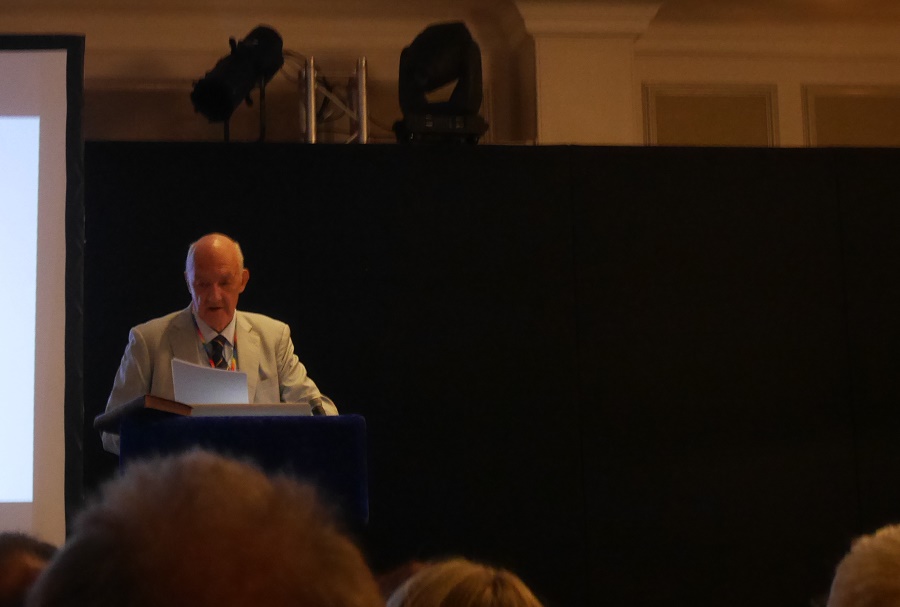
After a brief opening ceremony, the conference began with a talk by the one and only Tom Shippey. While I’ve seen some interviews with him here and there, it was the first time for me to see him live. You could tell that he is experienced in giving public talks and keeping an audience engaged; his talk truly was a highlight of the conference. “Ohne Tolkien, keine Fantasy – Without Tolkien, no fantasy” declares Shippey by citing the slogan of the German Tolkien Society. In fact, Shippey goes a step further and declares “Without Tolkien, no G.R.R. Martin”. The subject of his talk was the question of the “Heirs of Tolkien” discussing authors such G.R.R. Martin, Stephen R. Donaldson, and Michael Swanwick. Throughout his talk, Shippey compared and contrasted these authors and what he referred to as “Tolkienian Fantasy”. Despite the differences between the authors and their works, one common aspect of the most important fantasy written in the 20th Century is that it was written by traumatized authors. Trauma has, as Shippey emphasized, of course, many manifestations. Unfortunately, Shippey’s talk was over far too soon, but I know I’m not the only one when I say that I could listen to Tom Shippey talking for hours on end.
Afterwards, I’ve had a “Koffee Klatch” with Ted Nasmith. These Klatches were intended for visitors, each Klatch limited to no more than 15 people, to meet and talk with a Guest of Honour over a cup of coffee. You couldn’t buy your way into a Klatch. Instead, everyone had a chance to enter a lottery and were then picked for a Klatch. A few hours before the Klatch with Ted Nasmith, I’ve received an E-Mail that I won a spot and two weeks later, I’m still in awe. Ted Nasmith has been one of my favourite artists for years. Countless hours passed of me examining the smallest detail of his art, and suddenly I was among a small group of people asking Ted Nasmith questions about his art and his inspiration. My first impression was, and it got confirmed repeatedly throughout the week, that Nasmith is a very humble, almost shy person. Of course, Nasmith is heavily inspired by Tolkien’s own artwork. In general, when working on a piece, Nasmith tries to stay as close as possible to the text. Although, sometimes that is not always easy.
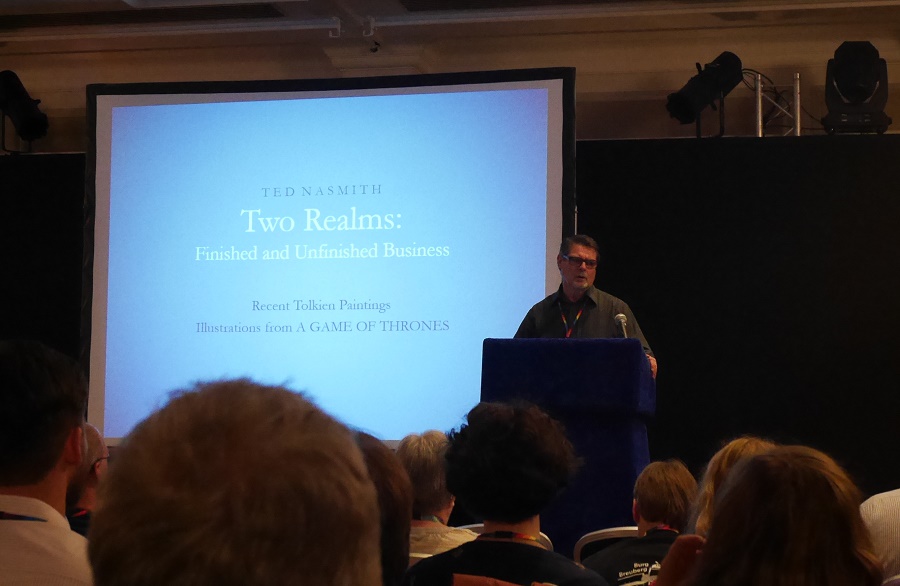
Whoever came up with the idea of a Klatch was a genius. The Klatch with Nasmith was insightful and a true privilege. Well, and came to an end way too soon. Thankfully, only a few hours later, Nasmith gave a talk about his art and his creative process. During that talk, he explained why it is sometimes difficult to illustrate Tolkien. When discussing how difficult it is to make an Ent look like a tree, Nasmith explained that “[some] things work better as descriptions rather than art”. During the second half of his talk Nasmith discussed the work he did for a limited illustrated edition of Game of Thrones. The biggest difference between his work for Game of Thrones and Tolkien’s Middle-earth is, according to Nasmith, that his art for GOT focuses less on landscapes, but more on encounters between people. Moreover, GoT describes real castles, as opposed to Middle-earth. Thus, illustrating GoT and illustrating Middle-earth requires for Nasmith a different approach and visualization.
After an interesting, talk by Bob Blackham on Tolkien’s Birmingham, discussing the places Tolkien either lived at, once visited, or otherwise were of significance to his life, I decided to visit the dealer’s room. From what I could find out by talking to other people, or reading the hashtag #Tolkien2019, many a coin was left at the dealer’s room. Personally, I’ve almost spend more than I could carry in my luggage (I was travelling with hand-luggage only). A personal highlight was to have talked to Jay Johnstone who was selling his art. Due to my aforementioned luggage issue, I’ve settled only on small items and only very few books. However, I’m now more than ever determined to buy some artwork from Jay Johnstone and Ted Nasmith, who also sold some art-prints at the dealer’s room.
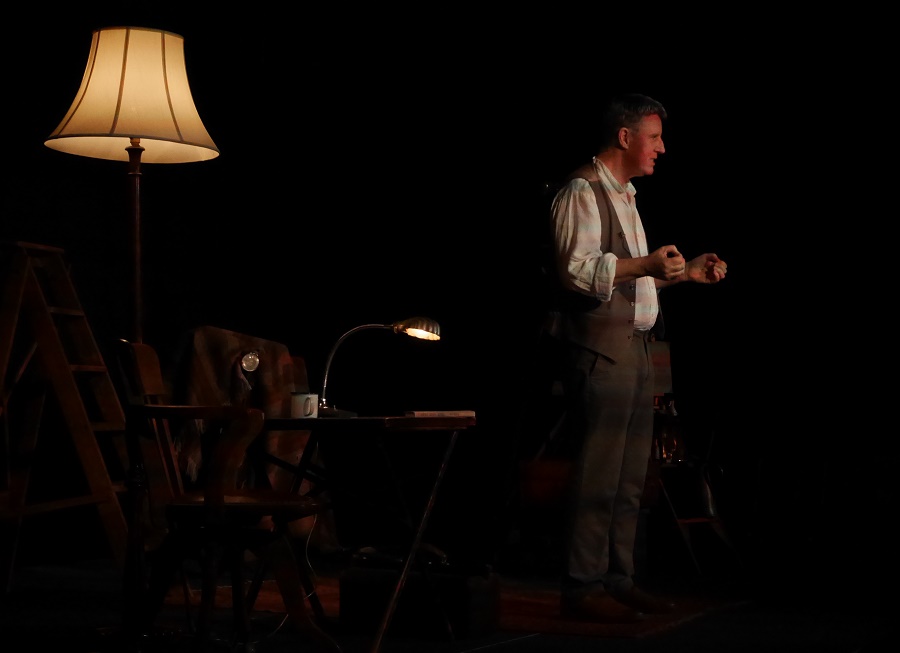
The first day ended for me with the highly acclaimed performance of Leaf by Niggle by the Puppet State Theatre Company. This one man show, performed by Richard Medrington, was very moving and made a lot of use the audience’s imagination. If you’re having the opportunity to see this performance, then I’ll say to you: go and see it! Even those who are not interested in Tolkien’s work will love it.
Day Two – 8th August
One of the things that really excited me during Tolkien 2019 were the amount of talks given on the Silmarillion. Day two, for example, started for me with Elise McKenna’s talk on Negotiating Dichotomies in Landscapes in Tolkien’s Silmarillion, offering a brilliant analytical journey through the Silmarillion and its liminal spaces. In other words, McKenna’s analysis focused on how landscape in The Silmarillion represents the classic good versus evil dichotomy.
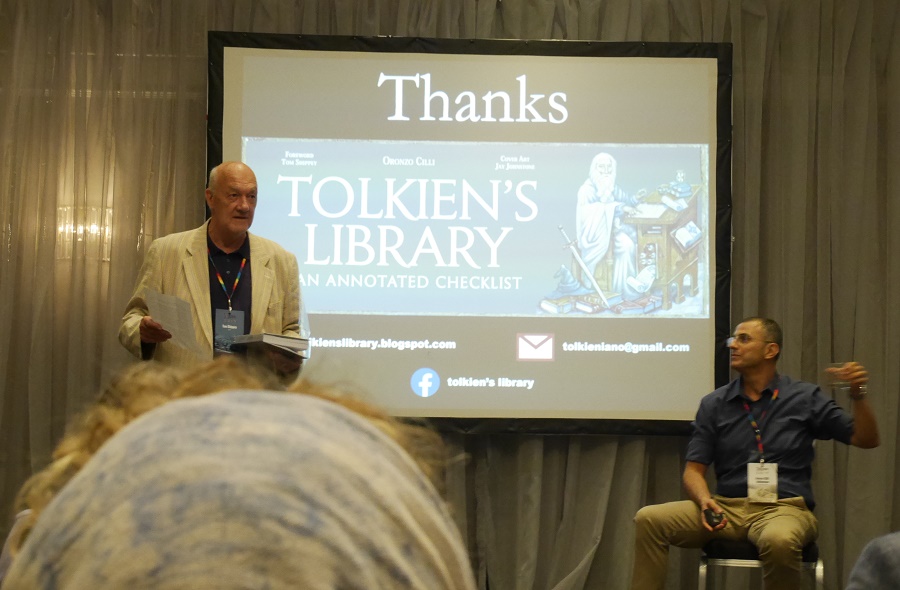
Afterwards, I made my way to an equally exciting, albeit very different, talk. Oronzo Cilli presented with Tom Shippey his newly released Tolkien’s Library, one of the most significant publications in Tolkien Studies in the recent past. After being intrigued by three images of Tolkien in his personal library, surrounded by books, Cilli undertook the daunting task to find out which books Tolkien might’ve owned or even read. The book has been published by Luna Press on August 8th and is, according to Tom Shippey “… a book we should keep, update, and write notes in the margin of, for the rest of our lives.” You can order it on the Luna Press homepage or on amazon.
After a brief break at the dealer’s room (one does not simply visit the dealer’s room only once), I’ve attended Michaela Hausmann’s talk on the Ouroboros symbol as a Pattern in Tolkien’s Legendarium. As obvious this connection might seem, I for one, have not thought about the Ouroboros symbol possibly occurring anywhere in Middle-earth. This was another thought provoking talk I would love to see published.
Next came Brian Sibley’s signing session. Like many others, I own more than one book by Brian Sibley and since I couldn’t decide which one to bring for the signing session, I settled on a small notebook. The truth is, I don’t care that much for the actual autograph, I use signing sessions to briefly meet the person of my admiration and be able to say ‘thank you’ which I was able to do with Brian Sibley.
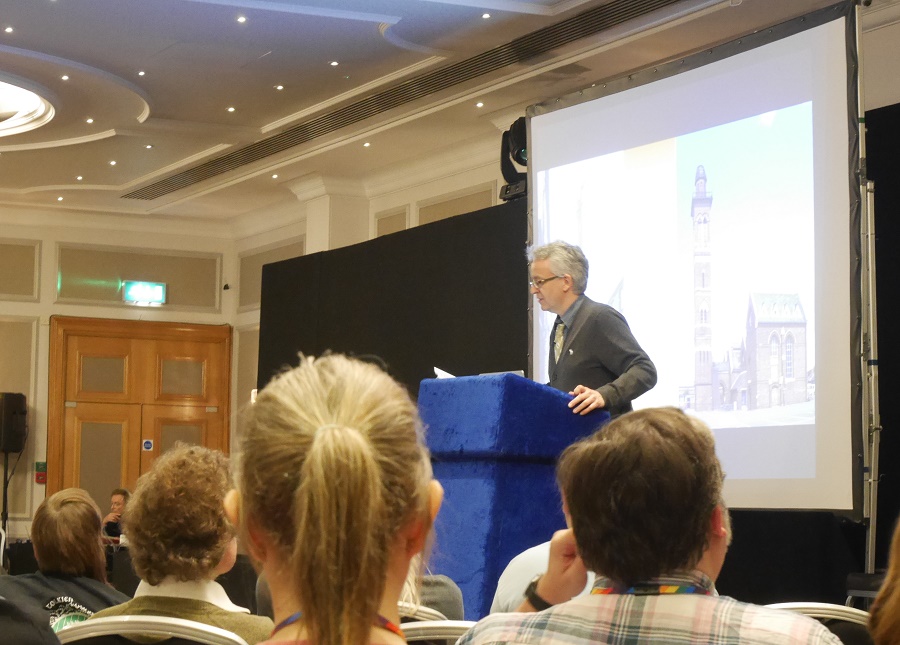
John Garth has been among those scholars I was looking forward to see and his talk on The Two Towers of Birmingham and other follies didn’t disappoint. Whenever you research possible places that inspired Tolkien’s work, you will inevitably stumble the widespread idea that two particular towers in Birmingham, Parrott’s Folly and Egbaston Waterworks’ tower, inspired Tolkien for the title of The Two Towers and even Minas Morgul and Minas Tirith. This, however, is a highly debated idea. In his talk, Garth examined, in great depth, why and how this may not be true. In other words, his attempt was to ‘destroy’ the popular theory of the “Two Towers of Birmingham”. Later this year, Garth will publish Tolkien’s Worlds: The Places that shaped a writer’s imagination, exploring the relationship between real and fantastical worlds and how it inspired Tolkien.
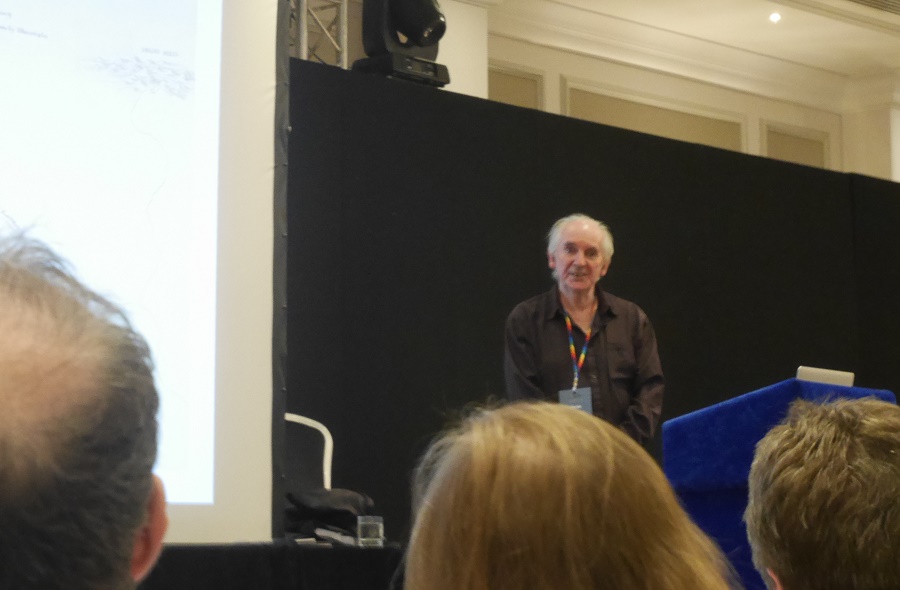
After a lunch-break for me, it was time for the highly anticipated talk by Alan Lee. Alongside Ted Nasmith and John Howe, Alan Lee is one of my favourite artists. Lee talked about his artistic journey in Middle-earth. One of the aspects he misses when illustrating Tolkien is that he cannot express the more humorous side of his work. Of course, Lee also talked about his experience working on The Lord of the Rings movie trilogy and The Hobbit movie trilogy. During the six years Lee worked on LOTR, he created roughly 2500 drawings. Roughly the same amount of drawings were also created for The Hobbit and some of these drawings will be published later this year in his upcoming Hobbit Sketchbook. If fact, Lee shared some of these sketches with us and they were absolutely stunning! If there is one thing I learned at Tolkien 2019, then it is that there are many upcoming Tolkien related publications people can look forward to.
The last talk I’ve attended on day two was Setting the Silmarillion to Music by the composer Paul Corfield Godfrey. I have heard only recently about Godfrey’s ambitious project, capturing the richness of The Silmarillion as an opera. Visual adaptations of Middle-earth provide a very different experience than having Middle-earth manifest through music, but Godfrey’s opera manages to capture the themes and emotions of The Silmarillion. This article may seem like an infomercial of all the things you need to buy at this point, but I highly recommend you Godfrey’s opera!

Last, but not least, day two ended for me with more music. We were blessed by a stunning performance by the People’s Orchestra. For two hours, the orchestra performed a medley of various soundtracks such as LOTR, The Hobbit, Game of Thrones and much, much more. The People’s Orchestra is a community-based non-profit organisation with the aim to help local unemployed people back into work.
As I was sitting in the audience, allowing the music to take control of my emotions, I couldn’t help but think and wonder how the imagination of one person affected so many people in so many different ways. Before the end of the second day, I’ve met and talked to many great people from all over the world and the one thing we all had in common was our love for Tokien’s legendarium. I’m not going to lie, it took all my will-power not to cry as I was swept away by the music. I’m not a very sociable party person so after the orchestra, I made my way back to my hotel instead of attending the after-party.
This is the end of part one of my article-series on Tolkien2019. Make sure to come back for part two, exploring day three and four!


